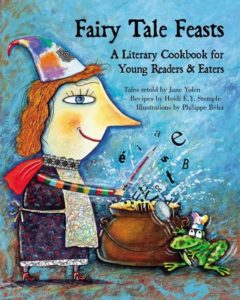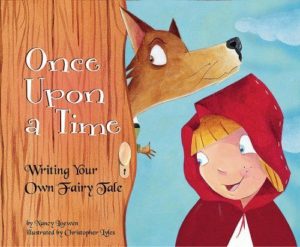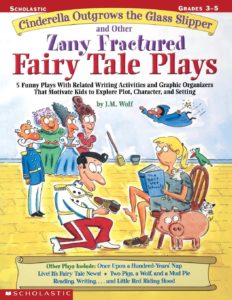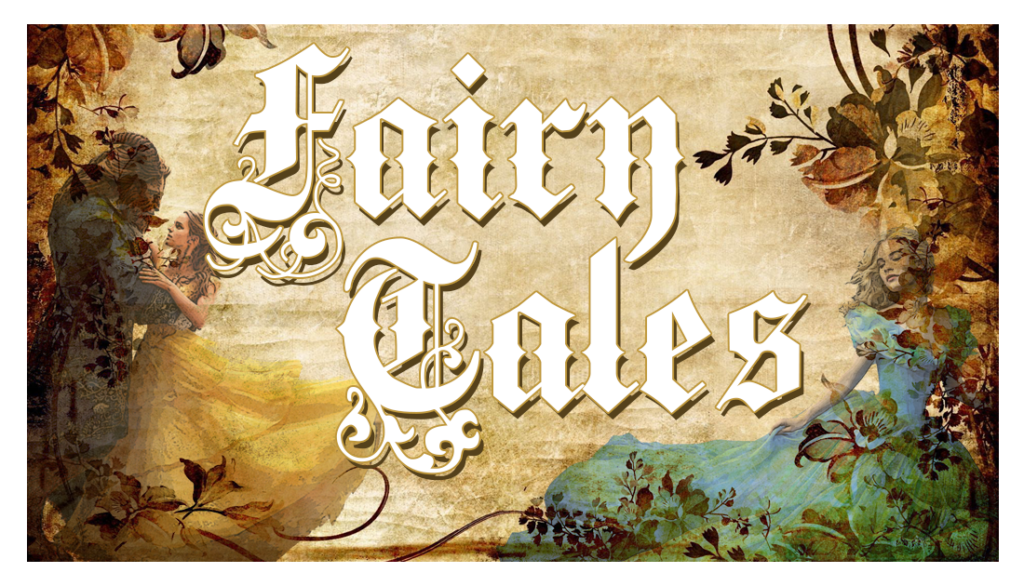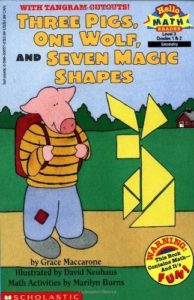
|
Grace Maccarone’s Three Pigs, One Wolf, and Seven Magic Shapes (Cartwheel Books, 1998) is a twist on the pigs’ story in which the three use tangrams to solve their problems. A set of cardboard tangram shapes is included with the book, or can be downloaded from Mathwire, along with templates for solving the puzzles in the book. A fun way to learn geometric shapes for ages 4-8. |
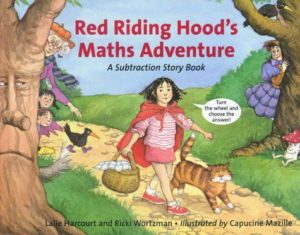
|
In Lalie Harcourt and Ricki Wortzman’s Red Riding Hood’s Math Adventure (Charlesbridge Publishing, 2001), Red Riding Hood sets off for Grandma’s house with a basket of cookies – which she ends up sharing with other fairy-tale characters along the way. The book is an interactive exercise in subtraction: kids determine how many cookies to give to each, and calculate the remainder by means of a die-cut wheel. For ages 4-8. |
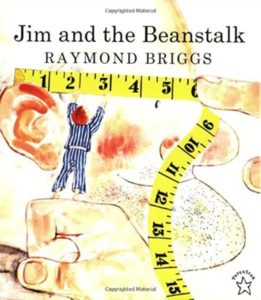
|
In Raymond Briggs’s Jim and the Beanstalk (Puffin, 1997), Jim (in striped pajamas) climbs the beanstalk that he finds outside his bedroom window and meets an elderly giant in need of eyeglasses, false teeth, and a wig. Jim helps him solve his problems with the help of a measuring tape. For ages 4-8. |
|
From Core Knowledge, the study unit Let’s Measure! targeted at grade 3 includes a hands-on lesson featuring Jim and the Beanstalk. |
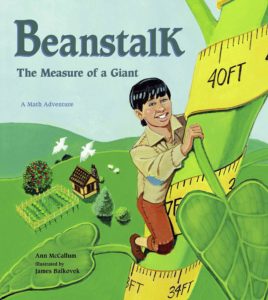
|
Anne McCallum’s Beanstalk: The Measure of a Giant (Charlesbridge Publishing, 2006) demonstrates concepts of ratio when 4-foot-tall Jack climbs the beanstalk and befriends Ray, a 20-foot-tall giant boy. Playing games together requires some size adjustments. For ages 7-10. |
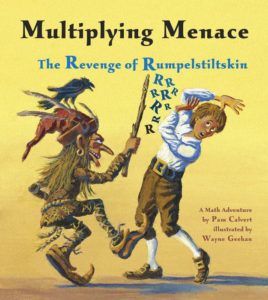
|
In Pam Calvert’s Multiplying Menace: The Revenge of Rumpelstiltskin (Charlesbridge Publishing, 2006), it’s been ten years since the Queen guessed the little man’s name and now he’s back, just in time for Prince Peter’s birthday, peeved, demanding payment for all that straw spun into gold, and wielding a magic walking stick. The stick is capable of multiplying things by either whole numbers or fractions, and Rumpelstiltskin uses it to wreak havoc, increasing numbers of bugs, rats, mice, and the size of the king’s nose, and decreasing the numbers of the palace guards and farmers’ livestock. It’s up to young Peter to nab the stick, correct the problem, and defeat Rumpelstiltskin once and for all. Clearly a vehicle for math, but more appealing than many. For ages 9-12. |
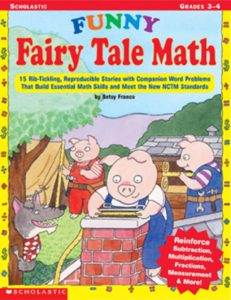
|
Betsy Franco’s Funny Fairy Tale Math (Scholastic Teaching Resources, 2011) contains 15 retellings of familiar fairy tales, with associated worksheets for practicing basic math skills. For example, kids do addition and subtraction exercises with Rapunzel’s hair, identify number places with Rumpelstiltskin, calculate areas with the Three Pigs, and learn money skills with the Billy Goats Gruff, geometry with the Gingerbread Man, multiplication facts with Tom Thumb, and fractions with Goldilocks and the Bears. For ages 7-9. |
|
Fairy tales as…EQUATIONS! Check them out here. (Invent some of your own.) |
